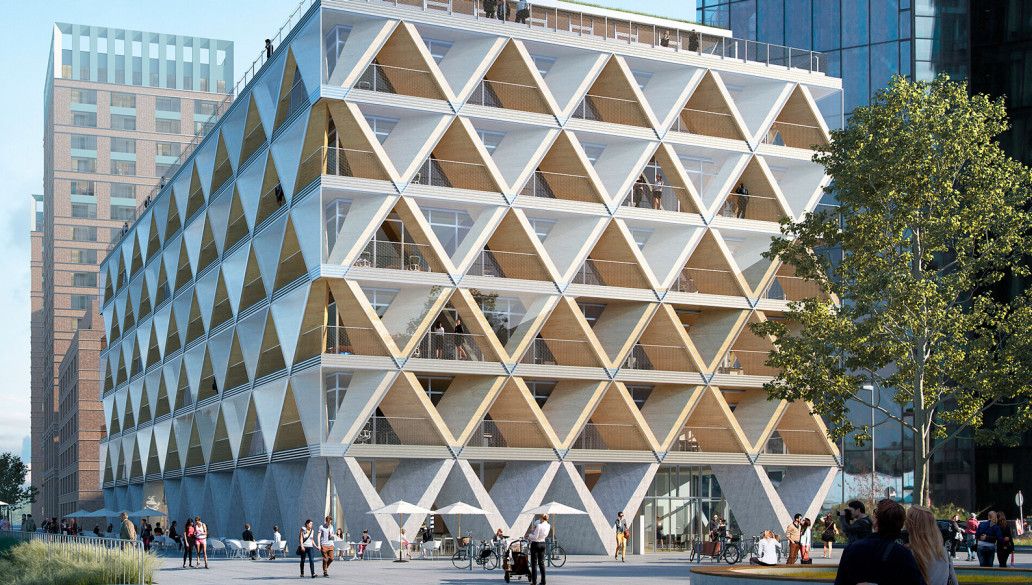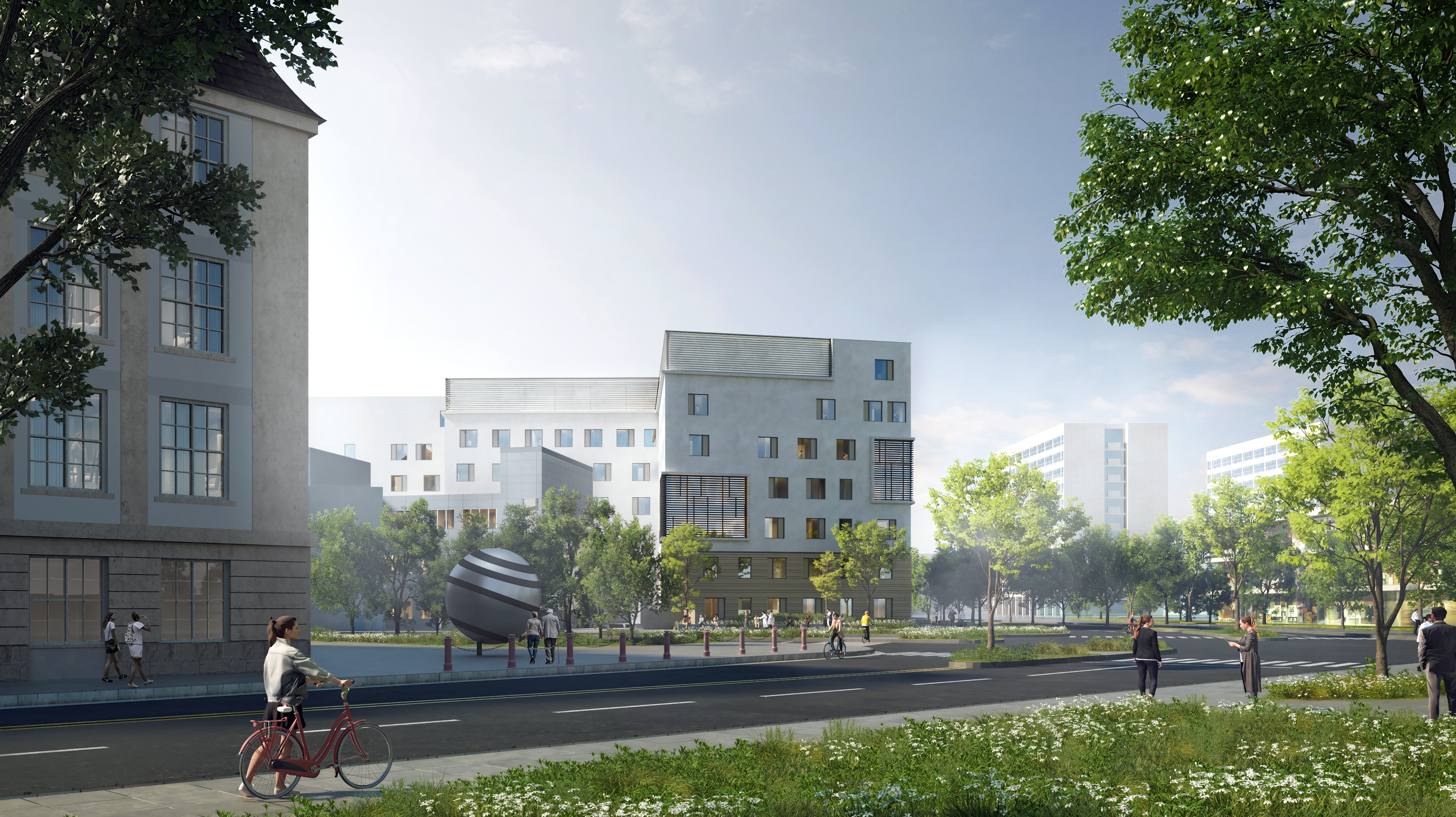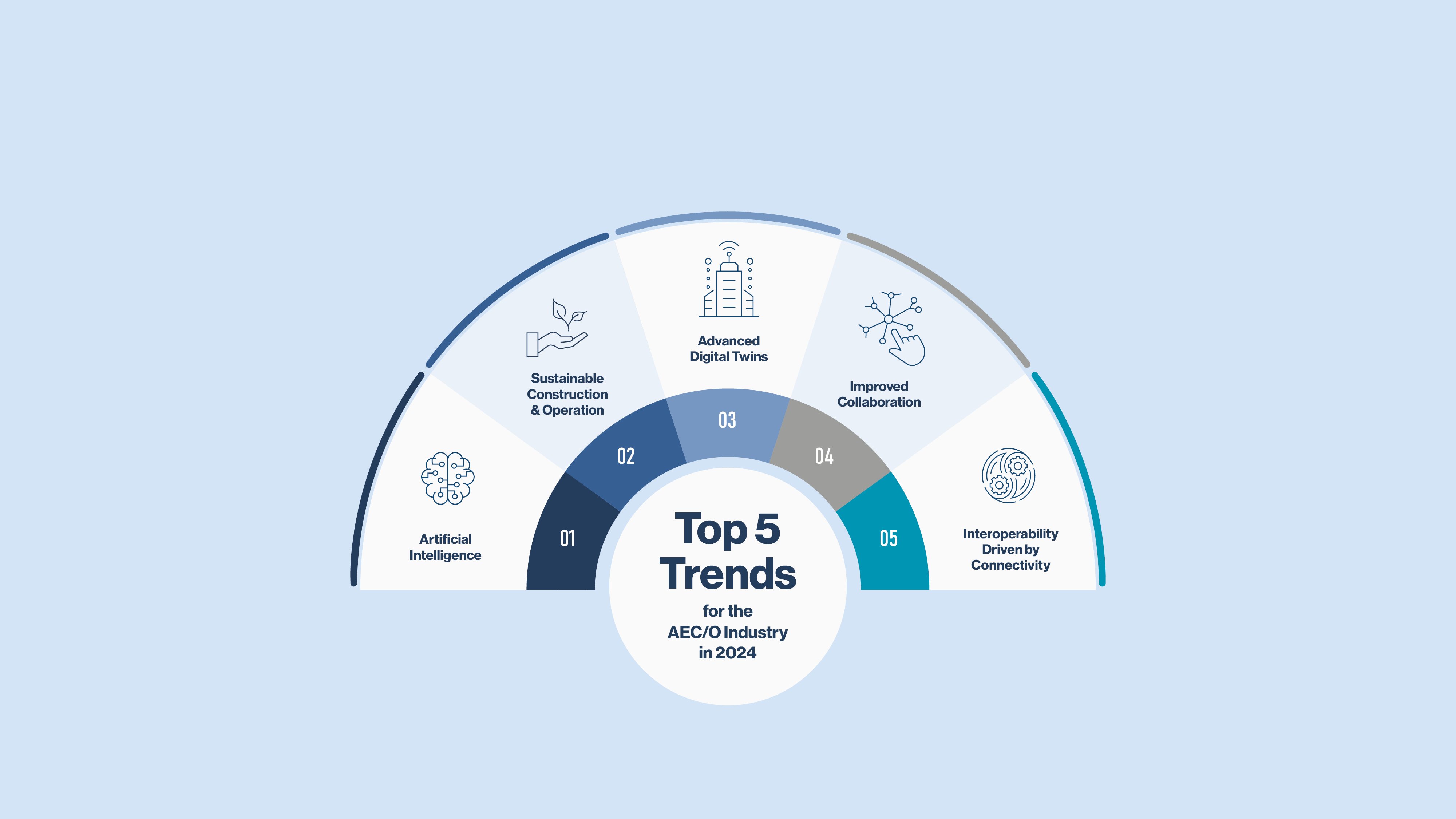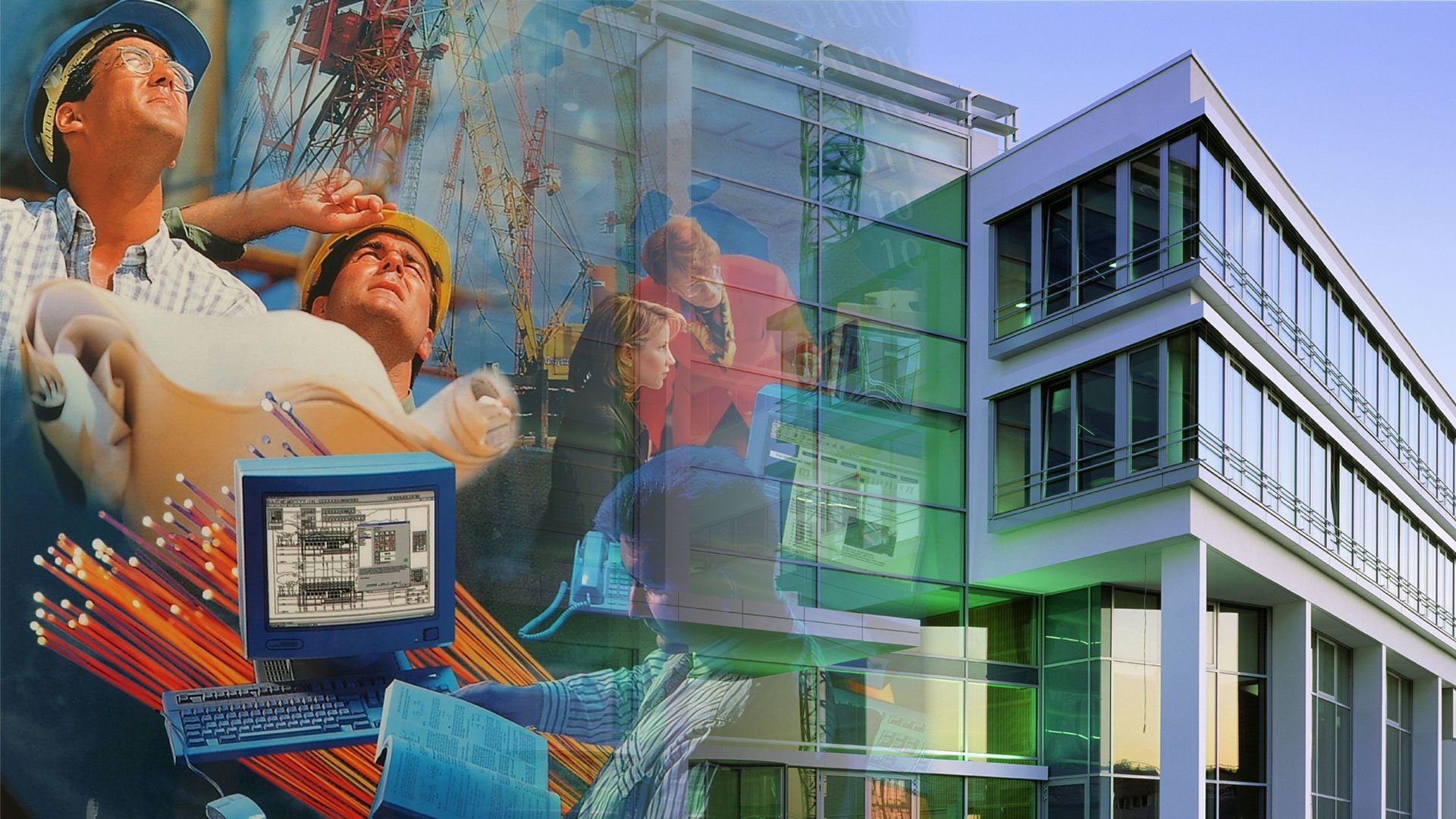A circular economy for a better future – The Cradle to Cradle® concept
Author
Eva Herrmann
Architect and freelance journalist with focus on communication the culture of building/architecture.
This article belongs to the collection Sustainability
To the topic pageSample text for the content body for the email template.
Concepts for the construction industry
The topic has also taken hold in the construction industry. Thanks to legal requirements such as the Energy Saving Ordinance in Germany and a rising social awareness – keyword climate change – the findings from research and pilot projects are gradually being applied in practice.
But we could already be much further ahead. The scientist Professor Michael Braungart, together with architect William McDonough, developed the Cradle to Cradle concept (C2C) back in the late 1990s: an idea that has what it takes to revolutionize more than just the construction sector. Cradle to Cradle® is, in a sense, the supreme discipline among sustainability concepts. This approach is about more than just striving to do as little harm to the environment as possible – the focus is not on resource conservation, energy consumption, or recycling. Rather, a new way of thinking is proposed: an approach that considers real cycles.
Braungart has always emphasized that we can take nature as a role model. It isn’t miserly with anything at all, as he illustrated with an example of a cherry tree. It produces thousands of blossoms, many of which eventually fall to the ground. There, they become nutrients for the soil and contribute to a stable ecosystem. This abundance is not a waste, but very useful and, on top of that, beautiful. According to C2C, people should behave in exactly the same way instead of preaching reduction and frugality with a permanently bad conscience. Our ecological footprint does not have to be small, it can even be very large – if it is a positive one.
Smarter production and management
In summary, we need products that are not less harmful, but useful, healthy, and profitable. Things whose components can circulate in biological and technical nutrient cycles – from cradle to cradle. The fact that the concept is now gaining acceptance in Germany – which, according to Braungart, is a country that is slower to innovate compared to others – is due to advancing digitalization. Only products whose composition is precisely known can be digitized.
In fact, a building is currently under construction in Düsseldorf's Medienhafen district that has not only been designed according to the ambitious principles of Cradle to Cradle design but has also been optimized using the digital possibilities of Building Information Modeling (BIM). “The Cradle”, a design by HPP Architekten, impresses not only with its inner values – the building constructed by INTERBODEN GmbH & CO. KG with a striking facade of V-shaped columns is also architecturally successful. It is the first timber hybrid office building in Düsseldorf and has already received several awards before its construction began. The innovative timber structure, which also forms the facade, was created in collaboration with the structural engineers Knippers Helbig and energy planners Transsolar.
To enable the recyclability of materials, the structural elements are reversibly connected so that they can be reused after use. In addition, materials were selected based on health criteria and recyclability.
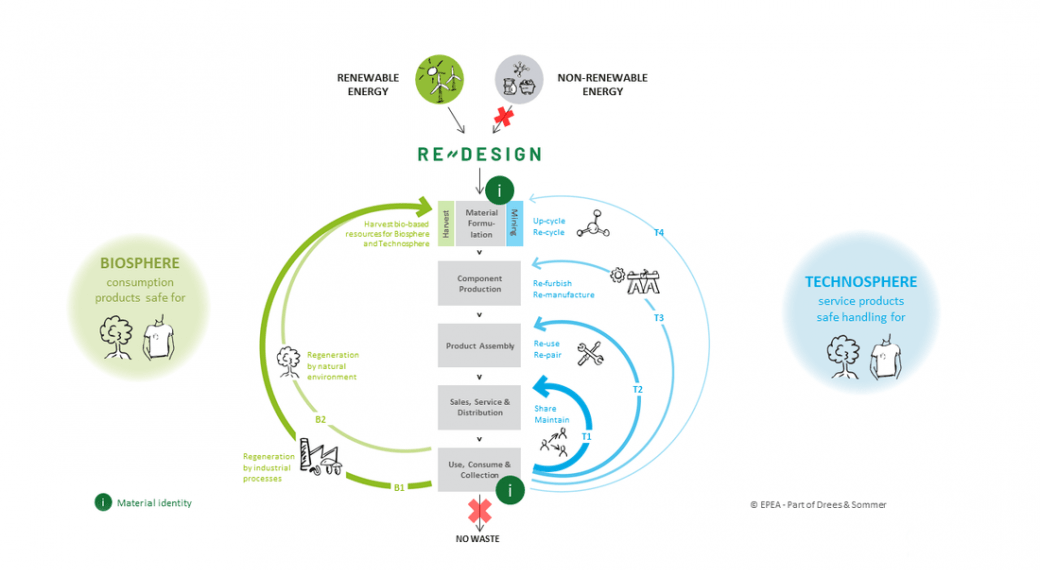
Visualization: depending on the compass direction and context to the neighboring buildings, the exterior construction varies in orientation and depth.
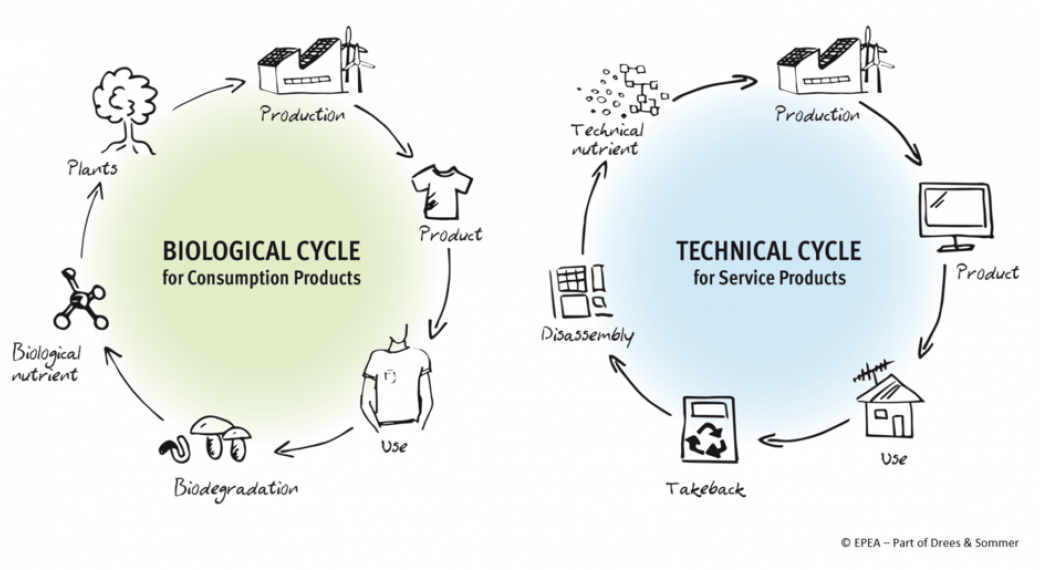
A passport for the property
All the information on the building’s components is stored in the Building Circularity Passport®. This is a development of EPEA GmbH – part of Drees & Sommer, which emerged in 2019 from the former EPEA Internationale Umweltforschung GmbH, founded by Michael Braungart. The Building Material Passport also includes C2C criteria, such as the chemical nature of materials and their ecological impact. All planning data can be used by all parties involved in the construction process. In this way, the building’s sustainability and recyclability requirements also become comprehensible to all teams.
The data can also be easily integrated into BIM. Solibri Office enables model references down to an elementary level. With the seamless integration of the data sets in Solibri, the planning data can be easily processed further. Afterwards, the results can be linked back to the respective model and its elements. A colored chart of the six Cradle to Cradle® criteria illustrates the optimization possibilities down to element level:
- Carbon footprint
- Health
- Origin of the material
- Flexibility
- Recyclability
- Separability
Practical experience has shown that the complex interrelationships of the Cradle to Cradle approach are easier to understand through representation in the BIM model. In addition, communication with all those involved in planning is improved. The future has long since begun. With consistent rethinking and the continual resolve to protect our planets, we can already construct buildings today that are healthy, sustainable, and economical.

